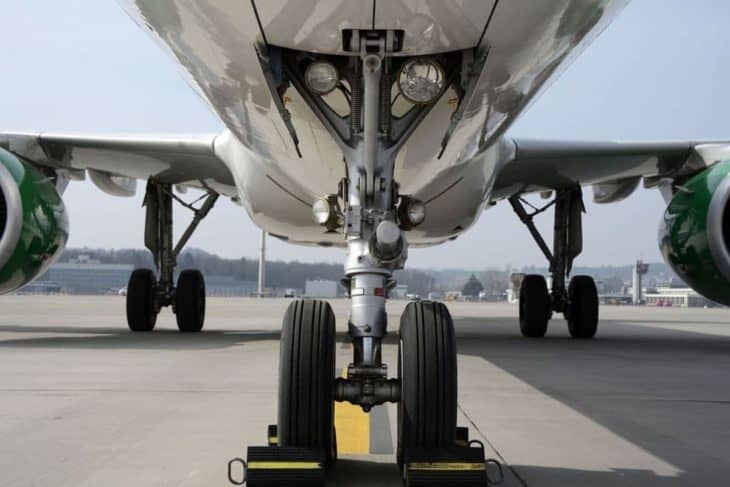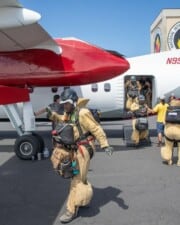Safety Management Systems (SMS) have been adopted by the Federal Aviation Administration (FAA) and International Civil Aviation Organization (ICAO) as the gold standard in effectively managing risk.
Table of Contents
The need for aviation companies to have a Safety Management System became apparent as safety cultures have shifted away from reactive risk management towards proactive and predictive risk management.
An SMS is not built on top of other systems. It must be integrated into every existing system at a company. An SMS provides the framework to shift the company’s culture toward a safety-focused culture.
An SMS places safety factors on the same level as business concerns. When an SMS is working correctly, every employee is responsible for proactively responding to safety risks. Instead of ignoring risks, risks are mitigated.
History of Safety Management Systems
The 1995 aviation safety summit resulted in the FAA creating an Office of System Safety. The FAA began to look forward to predicting risks rather than responding reactively to accidents.
Transport Canada was one of the first companies to adopt an SMS system in 2000. In 2006, ICAO required most commercial aviation operators to implement an SMS. In 2015, the FAA required Part 121 Air Carriers to have an SMS in place by 2018.
What is a Safety Management System?
A Safety Management System aims to help aviation businesses re-organize to focus on safety.
One of the core components of an SMS is safety promotion. Safety promotion aims to create a company culture focused on risk prediction, mitigation, and avoidance. For instance, if an employee notices a missing bolt, a red wet mark in a hanger, or has a weather concern, they should feel comfortable speaking up and investigating the cause. An SMS supports employees in focusing on safety and bringing a safety focus to each part of the flight planning and operation.
According to FAA Order 8000.369, “SMS is the formal, top-down, organization-wide approach to managing safety risk and assuring the effectiveness of safety risk controls. It includes systematic procedures, practices, and policies for the management of safety risk.”
Why is an SMS Important?
A Safety Management System is a structured process designed to elevate safety to the highest concern; businesses must treat safety with the same attention as other business concerns. Safety Management Systems is recognized by International Civil Aviation Organization (ICAO), Civil Aviation Authorities (CAA), and Joint Planning and Development Office (JPDO).
Safety Management Systems provide:
- An organized means of decision-making for safety risk management.
- A method of proving safety management capacity before the system fails.
- Improved trust in risk controls through organized safety systems.
- A functional process for information sharing between regulator and certificate holder.
- An organizational structure that supports a safety culture.
A Safety Management System is all about making good decisions that promote safety. Everyone in an aviation organization can contribute to safety, from receptionists to line personnel to pilots and managers. Safety Management Systems aim to all three decision-making phases: reactive, proactive, and predictive, into their operations.
Safety Management System Example
Before we get into technicalities and implementation, let’s look at an example to understand why an SMS is essential.
The FAA provides a hypothetical example where several different stakeholders notice a wet spot on an aircraft’s tire. The team members were all busy, worried about delaying the flight, and focused on the customers’ expectations. They were distracted and rushed.
While there were many opportunities to notice that the hydraulic brake line was leaking, employees did nothing to fix it. When the aircraft landed, and the pilot tapped the brakes, the aircraft caught on fire. In this hypothetical situation, all crew and passengers survived, but the aircraft was destroyed.

This situation is an example of how an effective Safety Management System could have prevented this incident. Suppose any team members had been more focused on predictive and proactive decision-making and investigated the wet spot. In that case, the accident could have been prevented.
It can be easy to think that a focus on safety costs time and money. The loss of an aircraft represents a significant amount of money, so a safety focus can work hand in hand with business priorities.
Pillars of a Safety Management System
Safety Management Systems have four pillars:
- Safety Policy
- Safety Risk Management
- Safety Assurance
- Safety Promotion

SMS Pillar 1: Safety Policy
Safety policy establishes management’s commitment to safety. A safety policy should include the overall expectations of employees and stakeholders. It should outline the available resources to employees to help them carry out the company’s safety goals.
The SMS safety policy should answer any questions employees have about how to carry out their safety responsibilities. The safety policy should describe the overall safety goals, clear safety goals, a safety organization chart, and a key safety staff list.
The SMS safety policy should lay out each employee’s role and safety responsibilities. The safety policy is a framework that allows the company to ensure the risk is as low as practically possible. As long as everyone follows the framework, the risks should stay low.
If the safety policy is not followed, an investigation must take place. Management must ask why the policy was not followed and what extra steps could prevent a future issue.
In the past, admitting a mistake was frowned upon. Under an SMS, employees are asked to submit incident reports to continue to improve the safety system. Safety incident reports should not be seen as punishable but as opportunities to learn. If employees fear retribution, they are less likely to come forward with concerns or share mistakes.
Under an SMS safety policy, employees should report all incidences, accidents, near misses, policy infractions, safety hazards, and safety concerns.
SMS Pillar 2: Safety Risk Management
Safety risk management is a formal process and involves describing the system and recognizing the dangers, then identifying, assessing, analyzing, and controlling the risk.
For instance, if you are about to conduct a flight to an airport with a high-density altitude on a hot day, first, the dispatchers and pilots must conduct risk management. What are the risks? What could go wrong? If it does go wrong, what will be the outcome?
Some risk management discussions will find risks that are improbable or can be acceptably mitigated. Some discussions will result in determining that the risk is likely or will have catastrophic consequences. In that case, stakeholders might have to cancel the operation until the risk can be acceptably mitigated.
There are three different types of risk management: reactive, proactive, and predictive. An SMS aims to shift the risk management focus from reactive towards proactive and predictive. The goal is to move the company as close as possible towards predictive risk management.
Reactive risk management occurs when an accident or incident has already taken place. Reactive risk management aims to minimize damage after the accident. Then, management looks at the accident, determines what went wrong, and puts procedures in place to prevent a future similar accident.
Reactive risk management is not ideal because the accident has already taken place. It also only addresses a specific accident or incident and does not address the overall safety culture. Suppose a bald tire caused an aircraft to skid off a runway. A reactive risk assessment might lead to a decision to check all tires. In this case, the risk assessment will only minimize the very specific bald tire risk.
Proactive risk management involves noticing the risks and minimizing the risk before an accident occurs. Suppose a line manager noticed a bald tire but replaced the tire before the flight and requested all tires to be re-checked. In that case, the line manager has effectively and proactively managed the risk.
Predictive risk management is conducted by management and not by line employees. When predictive risk management takes place, tires are continuously monitored, and checklists are in place. Predictive risk management systematically monitors all aspects of the operation. It predicts what systems need to be updated to mitigate risk. When a company moves towards predictive risk management, there should be less proactive and reactive risk management.
SMS Pillar 3: Safety Assurance
Safety Assurance (SA) provides confidence that the Safety Management System is operating as intended.
Again, this is a step where questions are asked. If the flight dispatcher decided that the high-density altitude was acceptable, did the risk management step work as desired? Did anything go wrong on the flight? Did anything almost go wrong?
Audits should be conducted to ensure that the SMS is operating well. This audit can be done internally or with external help, depending on the size of the company. The audit should prove that the company’s SMS has safety procedures that operate as desired. The audit will confirm that the SMS has safety metrics that are specific, measurable, and relevant.
The audit should confirm that safety policies are in place. The organization continuously monitors safety data, proactively minimizes risks, and understands their roles and responsibilities.
SMS Pillar 4: Safety Promotion
Safety promotion refers to a cultural shift; all stakeholders should focus on safety and risk management. Everyone in the company should feel comfortable reporting safety issues and be proactive.
Employees are trained to recognize risks and minimize them. Workers that work in a company with a healthy safety promotion culture and an effective SMS focus on safety, even when no one is watching.
SMS In Action: The Components of a Real-World System
Now that we’ve covered the basics of what SMS is let’s look closer at implementation.
SMS Training
For the SMS to be effective, company-wide training should be conducted. There are many different online and in-person training courses that safety managers can take. As part of safety promotion, everyone in the organization should be trained on risk management and putting safety first.
What Does Implementation Look Like?
SMS should not be a separate system used on top of, or next to, other systems and business practices. It should be integrated into existing systems and practices.
Communication is key. All employees should have access to a reporting system to confidently report safety concerns without fear of reprisal.
How Long Does it Take to Implement an SMS?
The FAA has found that it takes about three years to implement a Safety Management System (SMS) fully. This has held true, regardless of the size of the aviation organization.
Safety Management System Software
Many aviation businesses use software to manage their SMS data. While companies often start out using spreadsheets or existing software to track SMS data, it often becomes time-consuming and ineffective. Specific software, customized to the particular company, can make SMS data easier to track.
For more guidance from the FAA about how an air carrier should implement an SMS, check out FAA Advisory Circular AC 120-92B – Safety Management Systems for Aviation Service Providers
Related Posts













